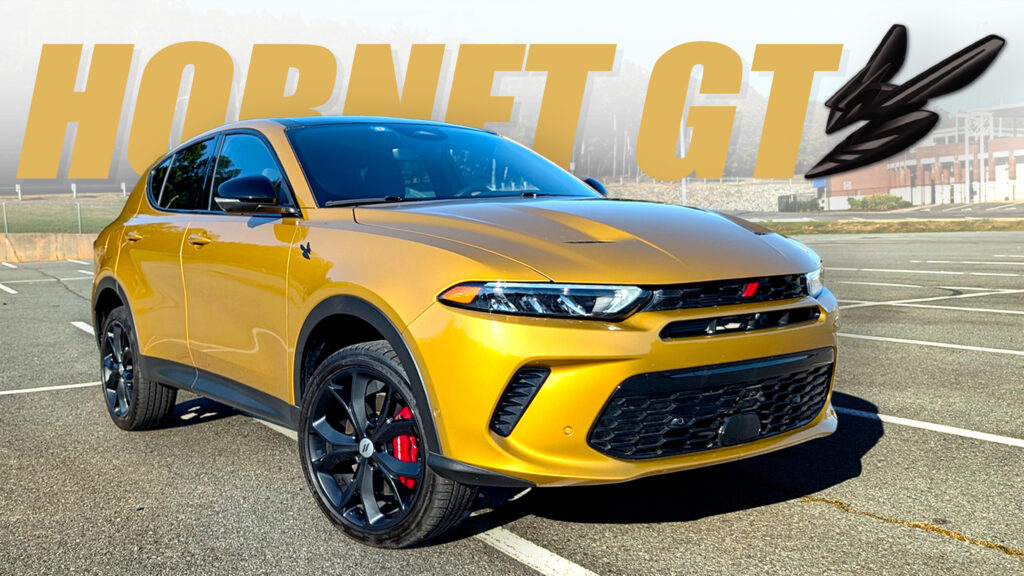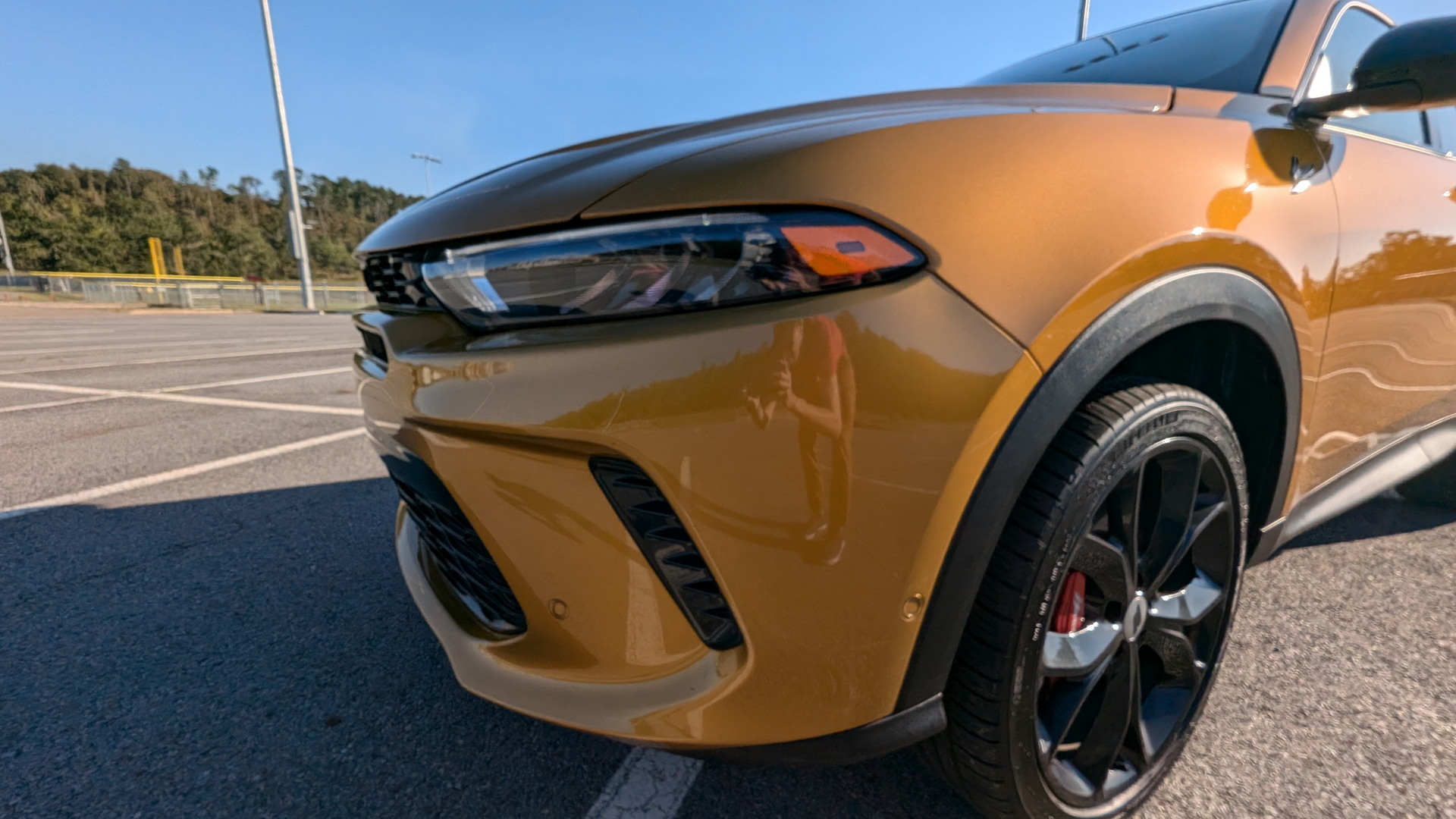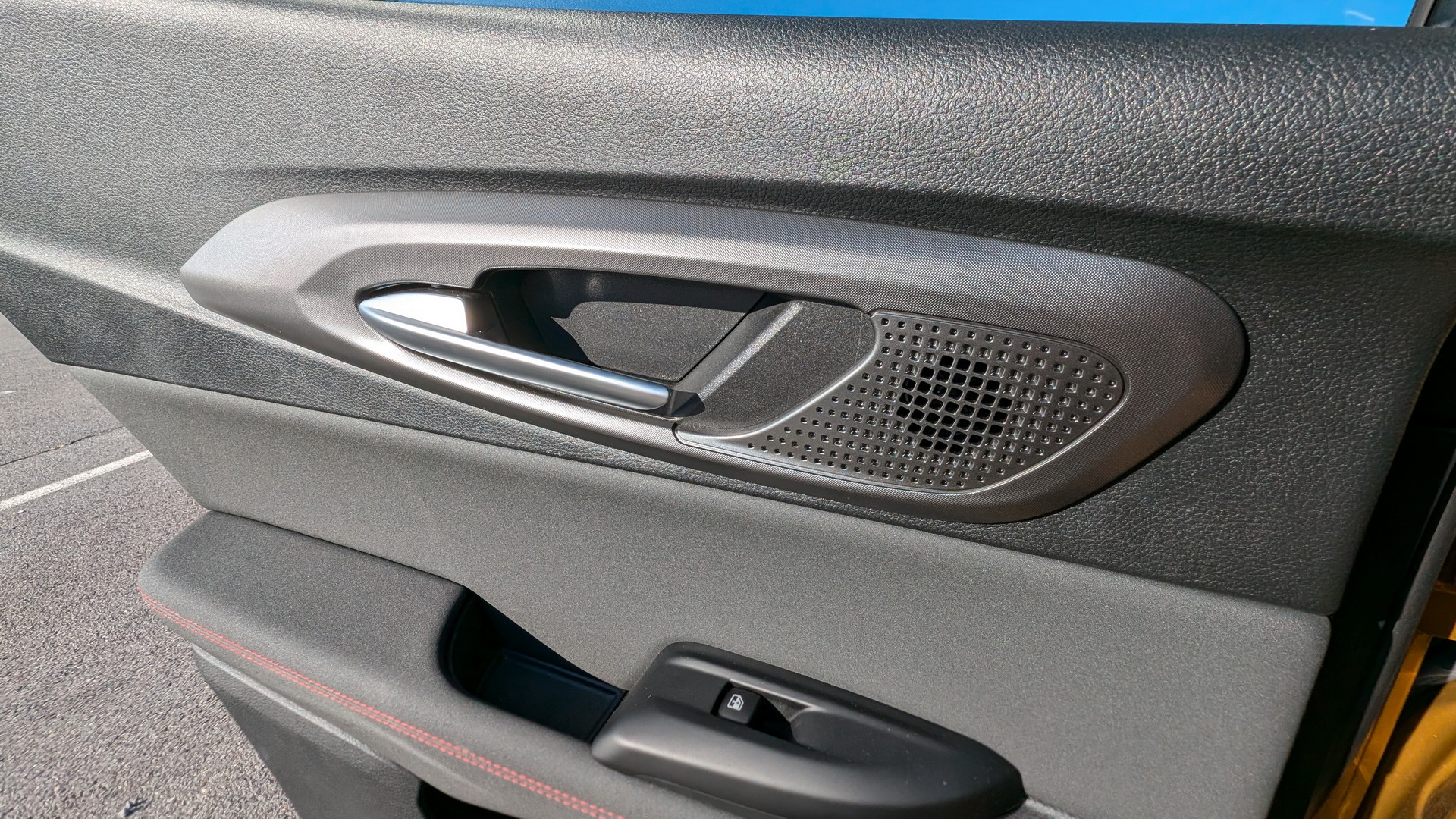The Hornet has a great deal riding on it. It represents a foray into a new segment for the brand. It’s the first all-new Dodge to come along in over a decade. The brand is so keen on it doing well that it’s made up almost comical commercials trying to connect this front-wheel-drive-biased crossover to the muscle car brotherhood—even though, at its core, it’s little more than a rebadged (albeit more affordable) Alfa Romeo Tonale.
Review: New Alfa Romeo Tonale Is Big On Style And Space, But Hybrid Needs Work
To the brand’s credit, this is the most powerful crossover in its class at its price. Despite Dodge’s best efforts, though, things aren’t going so well for the Hornet. As of early September, Dodge had enough Hornets on lots to meet supply through the majority of 2025. That’s not great and it had us wondering; what’s the big problem here?
To find out if this is just a case of the market missing a great car we picked a Hornet GT Plus on loan from Stellantis. We drove it around as if it were our own, did some performance testing with it, and even hauled around some friends to get their impressions. Here’s what we found out.
QUICK FACTS
The most powerful powertrain in its class
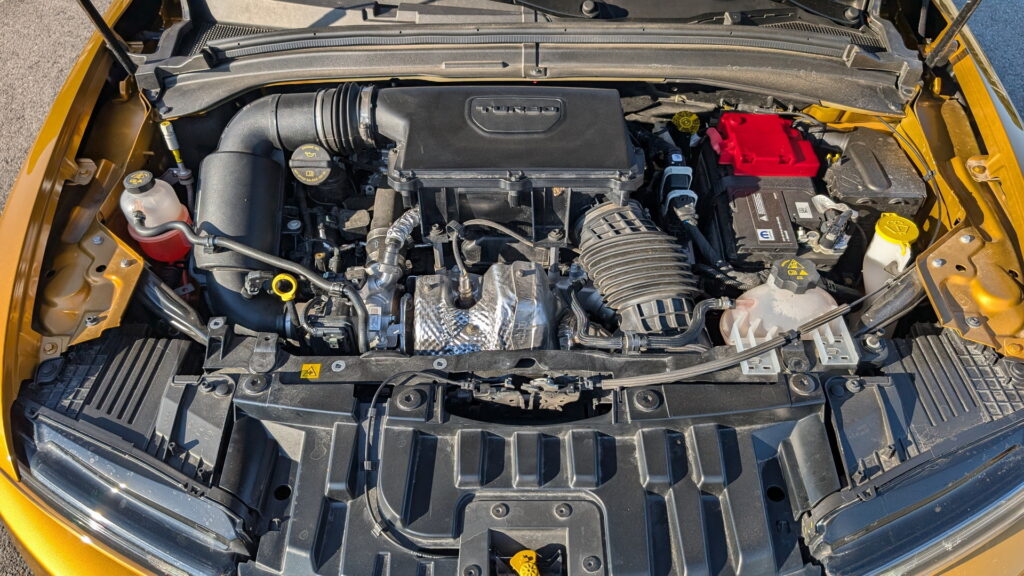
Under the hood of our $44,825 test car is a 2.0-liter turbocharged four-cylinder engine that makes 268 hp (199 kW) and 295 lb-ft (399 Nm) of torque. Let those figures sink in for a moment because they’re genuinely impressive when compared to other vehicles in this class. Before we go on though consider that every Hornet also comes standard with a nine-speed automatic and all-wheel drive.
Our test car without options starts at $36,695 and in fact, the base Hornet GT, with this same drivetrain, starts at $31,400, excluding a $1,595 destination fee. For that kind of money, there isn’t a single rival crossover with anywhere near the same amount of horsepower and torque.
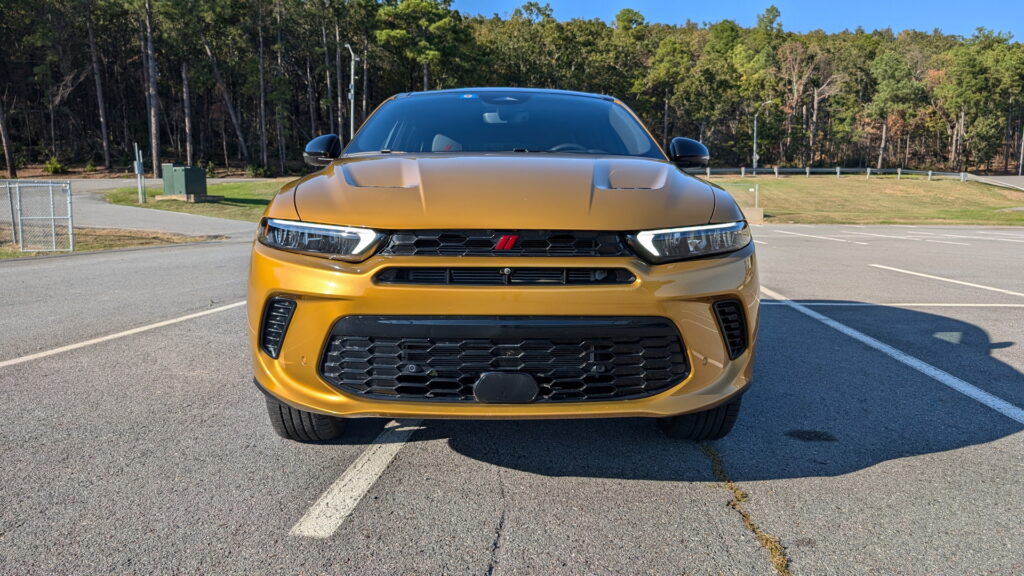
The Mazda CX-5 and CX-50 drive great but offer at most 250 horsepower. You’ll also need at least $38,420 to get into the least expensive model with that kind of potency. The Ford Bronco Sport also asks at least $38,000 for its most powerfully equipped trim but offers less than 240 horsepower. The Honda CR-V and Volkswagen Tiguan don’t even get mentions of their power and price because they don’t come anywhere close to competing in this realm.
Stylish and well-made but cramped interior
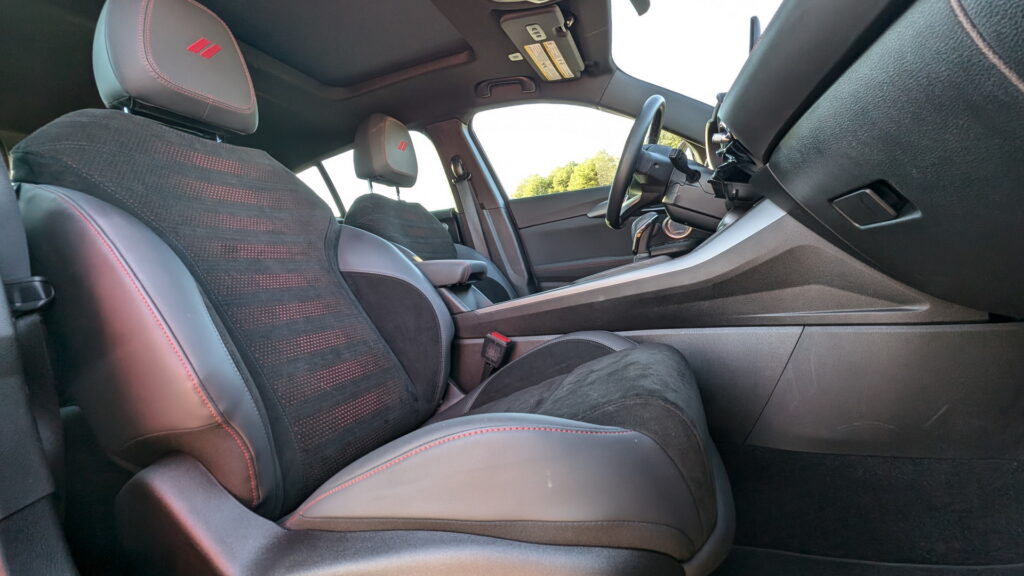
The Hornet might be a shameless badge-engineered Alfa Romeo but I consider that a huge win. Alfa Romeo has done a great job with interior design lately and the Hornet is a good example of it too. The panel gaps are tight and even. The layout is clean and simple. Even the controls feel good to use. I especially like the way that both front passengers basically have their own media volume control.
More: Dodge Promo Tries To Convince Us Hornet Is One Of The Muscle Family
In fact, the switchgear is just one of many highlights in this cabin. The Hornet features several physical buttons, knobs, and switches that all produce good tactile feedback. The amount of piano black plastic that adorns so many vehicles in this space is practically non-existent here. It’s almost as if Dodge is listening to all of the critics and customers who hate endless touchscreen controls and cheap plastic bezels on everything.
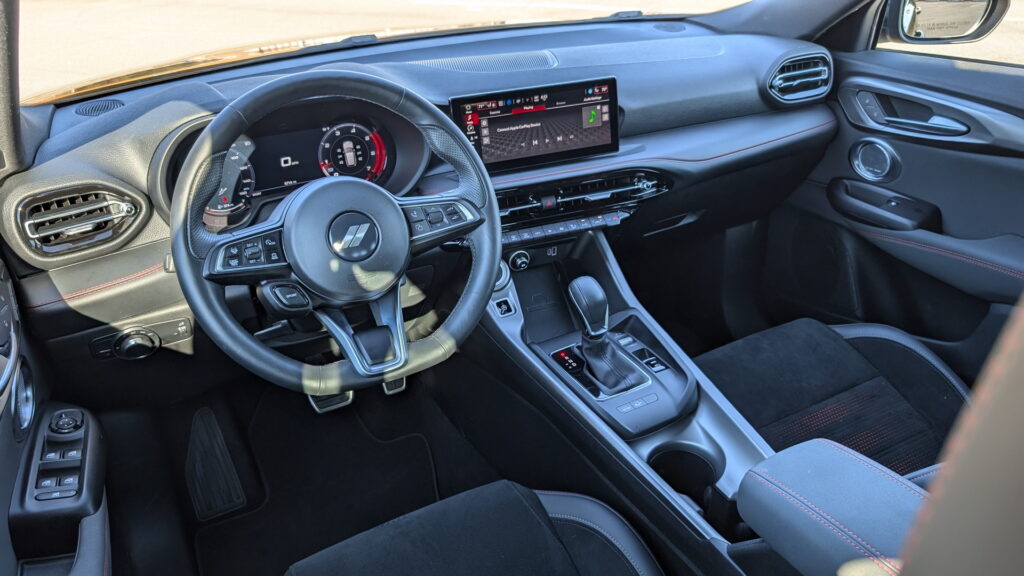
Uconnect is one of the best infotainment systems on the market and it’s good in the Hornet as well. It’s quick, easy to navigate, provides excellent graphics, and doesn’t have issues with freezes or glitches. At least, our test car didn’t have any of those problems.
The front seats are a positive step in the right direction too. They get nice thick bolsters that help to hold occupants in place and feature alcantara upholstery which looks and feels high-end. Sadly, the rear seats don’t have the same level of support. They’re mostly flat and the space is far more cramped than in the front.

Cargo space is pretty limited too. Behind the second row you’ll find 27 cubic feet of space. That’s up to 10 cubic feet less than you’ll get in some rival vehicles like the Hyundai Tucson or Volkswagen Tiguan.
A sharp chassis with great steering
Take one quick spin around the block in a Hornet and the first thing that shouts out its presence is the steering feel. This crossover honestly puts all of its competition to shame here save for the Mazdas. The wheel feels sharp, communicative, and the right mix of light when it needs to be and heavy when it should be. Every time I jumped in this car the steering caught my attention.
To a similar degree, the chassis deserves credit. No, this isn’t a very light car at some 3,800 pounds, but it’s not exactly a porker either. It’s clear through sharp and gentle bends that Alfa Romeo and Dodge really considered how it would carry its weight. It doesn’t lean over or dive into corners the way so many of its competitors do.
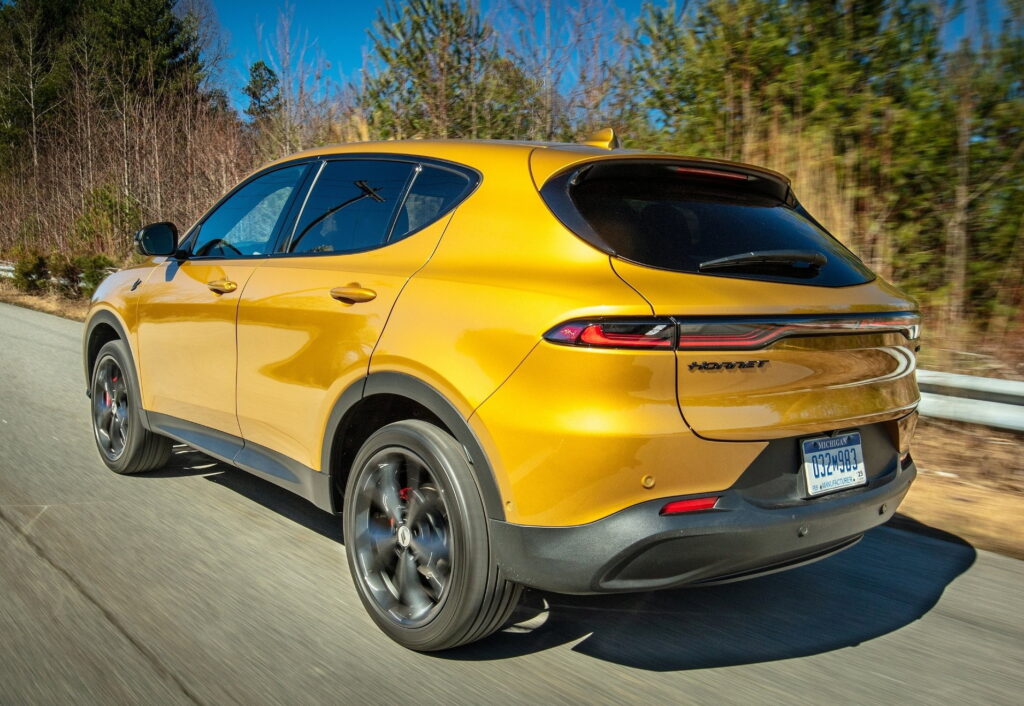
The all-wheel-drive system feels well-tuned too. Notably, it’s still front-wheel-drive-biased and it won’t spin the rear wheels out the way a Charger or Challenger might. At the same time, it doesn’t feel as prone to understeer as something like a Honda CR-V. In addition, the brakes feel great. The pedal feedback is clear and easy to modulate.
Ride quality is perfectly acceptable as well, which might be surprising to some given this car’s propensity for athletic behavior. It doesn’t seem to crash or vibrate excessively over poor roads and the cabin is quiet and comfortable. Will some prefer a softer ride? Probably… but those folks probably don’t care about how many ponies rest under the hood either. Here’s where things start to go downhill though.
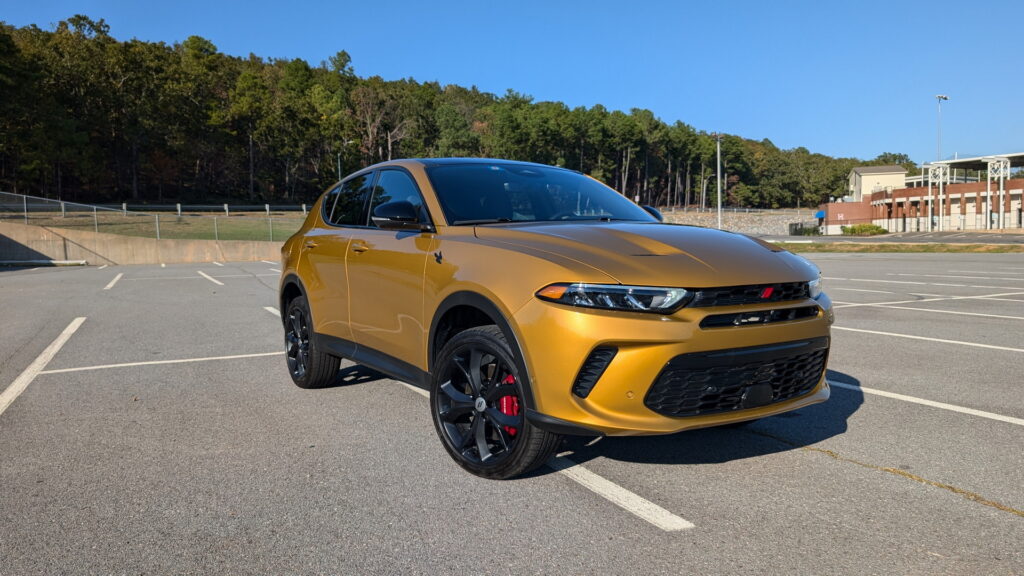
The defining feature of Dodge performance cars in the last decade has been power on tap. The Hornet GT has that power too and on the highway or on uninterrupted sections of a daily drive it’s very clear. This is a quick and responsive car. Well, it’s responsive so long as you’re already moving.
It’s tough to pin down exactly where the root of the problem lies but from a dead stop, the Hornet seems uninterested in moving. At least twice during the first few days with this car, I attempted to cross an intersection and ended up spiking my adrenaline because the Hornet didn’t leave the line with the gusto I requested from the accelerator.
There is a very strange, very deft delay in the way it takes off from a standstill. Whether that’s a product of ECU tuning or something to do with the gearbox I can’t quite tell. Notably, when one launches the car with pressure on the brake and accelerator it doesn’t have the issue at all. In our testing with a GPS-based tracking device, the Hornet managed several 6.6-second sprints from 0-60 mph. That’s in line with Dodge’s quoted 6.5-second time.
How does it stack up against the competition?
We’ve already highlighted that the Hornet has more power than everything else in the field. How does it stack up in other realms though? The truth is, it’s not great. Sure, this might be a performance-focused crossover but outright performance is inherently not the point of the average crossover. Instead, it’s practicality, and there are some clear opportunities for Dodge to learn from its competition.
For example, just about every car in the class offers more interior space. Don’t get me wrong, I prefer cars to be smaller and more powerful, but crossover buyers, of which I am not one, value being able to stretch out. They also want good fuel economy. The Hornet returned 25.3 mpg over the course of a week in combined driving with some very spirited sessions. That’s not bad at all but it’s also not going to match cars like the Honda CR-V.
It’s also worth mentioning that Dodge offers what amounts to basically the tiniest warranty package in the segment. The Hornet gets bumper-to-bumper coverage for three years or 36,000 miles. It gets powertrain coverage for five years or 60,000 miles. That doesn’t sell well against brands like Kia, Hyundai, Volkswagen, or even Mitsubishi who offer more coverage, complimentary maintenance, or both.
Final thoughts
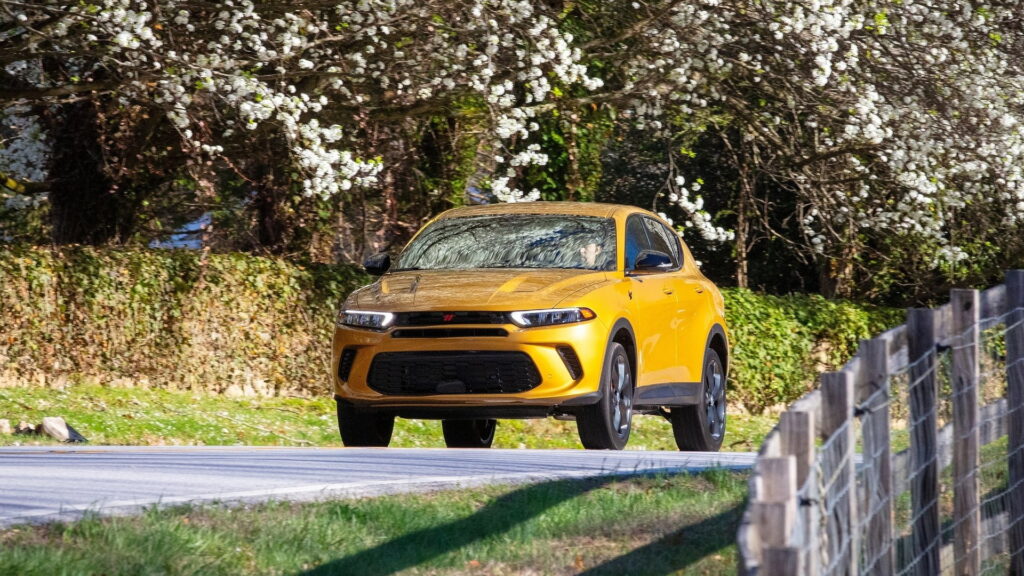
Here’s where all of this gets a bit murky because Hornet pricing isn’t static. As of this writing, Dodge dealers are slashing prices on it because of weak demand. Here is one example of an almost identical car to the one we tested. The dealer is asking just $29,985 for a car with an MSRP of $42,570. We’re talking about a badge-engineered Alfa Romeo with a full warranty for the price of Nissan Kicks with some options.
It’s not just the base engine that has this kind of a discount going on either. The PHEV Hornet also has some big discounts going for it with some dealers slashing prices by $10,000 or more. These are genuinely wild deals on genuinely good cars. No, they’re not perfect. In fact, they’re far from perfect, but they’re far from bad too. Nevertheless, at $36,000 or $42,000, it’s a considerably harder sell unless performance is the most important feature to a buyer.
The Hornet isn’t the win Dodge needed (yet), but it’s a sincere effort at appealing to the customer base. It prioritizes performance in a way that very few other cars (not just crossovers) do these days. We’d love to see Dodge steal some of the packaging brilliance Chrysler has shown in cars like the Pacifica. Beyond that, it’s the best performance value in the crossover segment right now.



